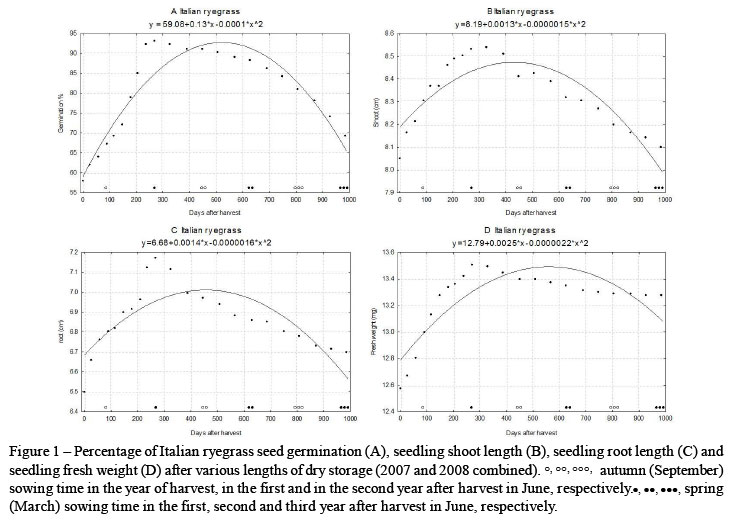During post-harvest maturation, different species vary in the length of dormancy breaking or germination increases. Seed dormancy and slow seedling development often limit establishment of forage grass stands. Seed germination and seedling vigour of Italian ryegrass (Lolium italicum A. Braun, Synonym Lolium multiflorum L.), cocksfoot (Dactylis glomerata L.) and timothy (Phleum pretense L.) were observed after harvest and storage. After harvest in June, seeds were stored under standard storage conditions and sampled every 30 days after harvest (DAH), up to 270 DAH, and then every 60 days up to 990 DAH. At each date, seeds were tested for final germination percentage and for seedling vigour traits. Timothy seeds had a maximum germination (88%) and the best seedlings vigour at 90 DAH, which implies that early autumn (September-October) is the best sowing period for freshly harvested seeds of timothy. Timothy seed germination was poor from 270 DAH (73%). The best germination and vigour of Italian ryegrass and cocksfoot seedlings were between 270 and 330 DAH, which equates to spring sowing time (March-April) in the succeeding year. Cocksfoot and Italian ryegrass seeds maintained satisfactory germination levels up to 630 DAH (81%) and 810 DAH (81%), respectively. The data can serve for the determination of a proper storage duration management between harvest and sowing of the tested species under ambient conditions of south-eastern Europe.
Forage grasses; post-harvest maturation; seed dormancy




